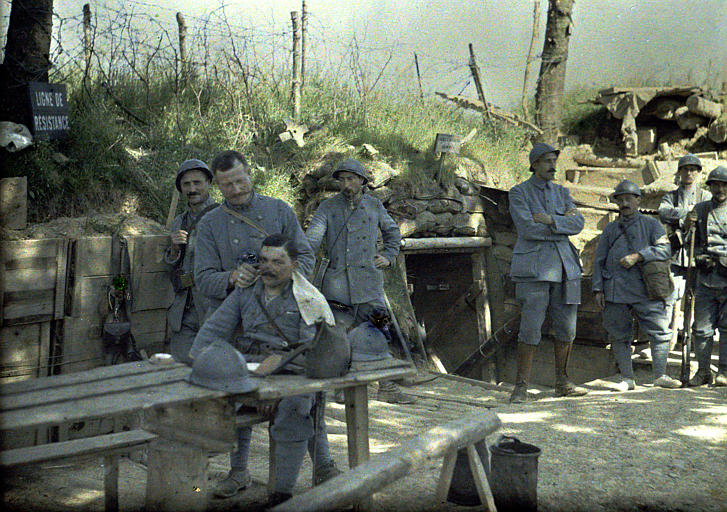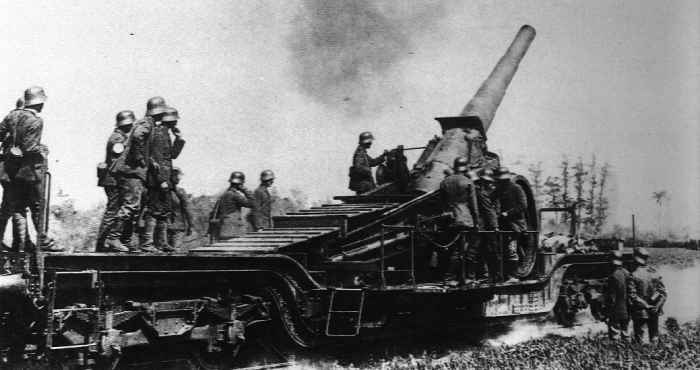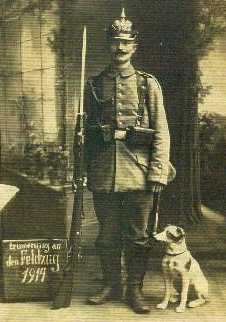Actually, the unit as it is with the low shako is perfect for German WWI Jaeger and Schuetzen, who wore a low black leather shako, with a feldgrau cover over it. I suggest a version with grey truosers however. When WWI began the German army was in the process of replacing all feldgrau (that grey-green colour) trousers with steingrau (a plain medium grey colour.)
Regarding everyone's comments on German WWI & II uniforms:
When WWI began, all German troops wore uniforms of feldgrau, which was a light grey-green colour, except the Jaeger and Schuetzen, both elite light infantry, who wore a much greener and somewhat darker shade.
All regular infantry wore the pickelhaube (spiked helmet) which was covered with a fedlgrau cover with a red unit number. Jaeger and Schuezten wore covered low shakos, as mentioned, and cavalry wore a variety of different hats based on the specific type. Uhlan (lancers) wore polich Chapskas, Hussars wore low fur busbies, and heavy cavalry (the Kurrassieren and Dragoniren) wore taller pickelhauben with longer visors and tails that covered the neck like 17th Century cavalry helmets. All were covered with feldgrau covers to keep the brightwork from shining. All leather equipment such as boots and web gear was brown leather, excpet with Schuetzen and Jaeger, who used black leather gear.
Throughout 1914, all units had their feldgrau trousers replaced with stiengrau, something arranged before the war, because the feldgrau ones faded too fast. At the same time, all units recieved orders to blacken all leather gear.
In 1915, most German infantry were unscrewing the spikes from their pickelhaube, because the spikes, sticking up as they did, anounced their presence before they broke cover. Red unit numbres were removed from the covers. Many soldiers prefered to fight in their Feldmutze, a round cap like modern dress peaked caps, but unstiffened and without the visor, in fieldgrau, with a band, red for most units, but green for Jaegers and Schuetzen, black for engineers. As the war went on, units began covering the colour part with a strip of feldgrau, because British snipers used the bright part to aim by. Also in 1915 a new baggier blouse was issued, much more like modern combat blouses. Puttees and ankle boots were coming into use on a semi-official basis because of leather shortages, but they never became official uniform except with Gebirgsjaeger (elite mountain light infantry)
In 1916, the new steel helmet was issued. Uniforms continued to become drabber, with more and more of the colourful piping removed, and cheaper materials being tried. Some units raised in 1918 were actualy issued with uniforms taken from the dead, with bullets holes patched and blood stains scrubbed as well as they could be, though still visible as discoloured patches.
In 1916-18 individual units, especially Jaeger, Schueten and Stosstruppen/Sturmtruppen started painting their helmets in a camouflage of browns, greens, and tans, in sharp angular pieces like the Dazzle scheme used on ships, with heavy black borders dividing the other colours.
The uniform of 1916 was, in basic colour, the same as the WWII version, with feldgrau blouse and helmet, steingrau trousers and black leather boots and harness. The only real changes for WWII were with details of decoration: the use of piping and it's colours for arm of service changed somewhat, National Socialist eagles were added in places, and so forth. The feldmuetze was replaced by sidecaps, and later billed caps (the latter also being called feldmuetze), and officers caps getting more a peak at the front. Panzertruppen got black uniforms with short jackets and boots. Also, the collar litzen (the bars) that the whole German army had in WWII had been a special distinction of Prussian Guards units in WWI.
At no point did anyone wear anything that could be called either dark green or dark grey, except for the collars and shoulder straps of the M1935-43 blouses, which were a blue-green-black.
Incidentally, for anyone writing a WWI scenario, these Jaeger/Schuetzen skins can have a special signifigance because the Jaeger and Schuetzen, with their much more fluid tactics, were the prototypes for the Stromtrooper units. What most armies considered "light infantry tactics" amounted to little more than deploying one's compnay in two or three extended order lines rather than close order ones, still maintaining the same rigid linear formation and tight control. Only specialized units like the Jaeger and Schuetzen, who had a history of commando-like scout and raiding operations, actually used fluid non-linear tactics that were the basis for modern infantry tactics based on squad and fire-teams.




 . I am looking forward to play a modern civ scenario in CIV
. I am looking forward to play a modern civ scenario in CIV



